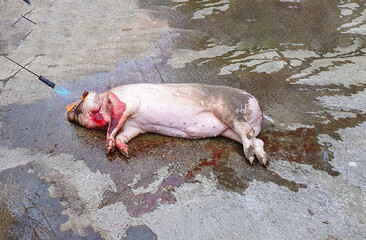Handling the removal of a dead animal requires careful consideration to ensure safety, efficiency, and compliance with local regulations. In this comprehensive guide, we will outline the best practices and strategies for dead animal removal brisbane, focusing on safety, environmental concerns, and efficient processes.
Understanding the Risks of Dead Animal Removal
Dead animals pose several risks, including the spread of disease, unpleasant odors, and potential pest infestations. The decomposition process can attract other animals and insects, further complicating the situation. Proper removal is crucial to prevent health hazards and maintain sanitary conditions.
Health Hazards and Disease Transmission
Decomposing animal carcasses can harbor pathogens and parasites such as bacteria, viruses, and fungi. These microorganisms can cause serious illnesses in humans and pets. Salmonella, E. coli, and Leptospirosis are just a few examples of diseases that can be transmitted through contact with or exposure to a dead animal.
Pest Infestation Risks
A decaying animal can attract pests, including flies, maggots, and rodents. These pests not only create further hygiene issues but can also lead to infestations in your home or property.
Preparing for Dead Animal Removal
Effective dead animal removal begins with proper preparation. Following these steps will help ensure a safe and efficient process.
Personal Protective Equipment (PPE)
Always wear appropriate PPE when handling a dead animal. Essential items include:
- Gloves: To protect your hands from direct contact with the carcass and contaminants.
- Masks: To prevent inhalation of harmful particles and odors.
- Protective Clothing: To shield your body from potential pathogens and debris.
- Safety Goggles: To protect your eyes from splashes and dust.
Tools and Supplies
Gather necessary tools and supplies for the removal process:
- Tongs or Shovel: For handling and lifting the carcass.
- Heavy-Duty Trash Bags: For disposing of the animal and contaminated materials.
- Disinfectants: To clean and sanitize the area after removal.
Step-by-Step Dead Animal Removal Process
Follow these detailed steps for a thorough and safe removal process.
1. Locate the Carcass
Identify the exact location of the dead animal. This may involve:
- Inspecting Your Property: Look in common hiding spots such as attics, basements, or under appliances.
- Using Odor Detection: A strong, unpleasant odor can indicate the presence of a dead animal.
2. Remove the Carcass
Carefully handle and remove the dead animal using your PPE and tools:
- Use Tongs or a Shovel: Gently lift the carcass to avoid breaking it apart, which can spread contaminants.
- Place in Trash Bag: Immediately place the carcass in a heavy-duty trash bag to contain any potential leakage.
3. Clean and Disinfect the Area
After removal, thoroughly clean and disinfect the area:
- Dispose of the Trash Bag: Follow local regulations for disposing of animal carcasses.
- Clean the Area: Use a disinfectant to clean all surfaces that may have come into contact with the carcass.
- Ventilate the Space: Ensure proper ventilation to remove lingering odors and airborne contaminants.
4. Prevent Future Incidents
Implement measures to prevent future animal infestations:
- Seal Entry Points: Inspect and seal any gaps or holes in your property to prevent animals from entering.
- Maintain Cleanliness: Keep your property clean and free of food sources that might attract wildlife.
When to Seek Professional Help
In some situations, professional help may be necessary. Consider contacting a wildlife removal expert or pest control service if:
- The Carcass is in a Hard-to-Reach Location: Difficult access areas may require specialized equipment.
- You Are Unsure of the Species: Identifying the animal can be crucial for determining the correct removal approach.
- You Experience a Large-Scale Infestation: A professional can assess and address larger infestations effectively.
Legal and Environmental Considerations
Ensure compliance with local laws and environmental guidelines regarding dead animal disposal. Many regions have specific regulations for handling and disposing of animal carcasses to prevent environmental contamination and public health risks.
Local Regulations
Research your local regulations on dead animal disposal. Some areas may require:
- Special Disposal Services: Certain locations have designated services for animal carcass disposal.
- Permits or Notifications: Notify local authorities or obtain permits if required for the removal process.
Environmental Impact
Consider the environmental impact of your removal process. Proper disposal and cleaning practices are essential to avoid harming local ecosystems and wildlife.
Conclusion
Proper dead animal removal pakenham is essential for maintaining a safe and healthy environment. By following these guidelines and preparing adequately, you can ensure an efficient and sanitary removal process. If you encounter challenges or have concerns about the removal process, professional assistance may be necessary.





Comments